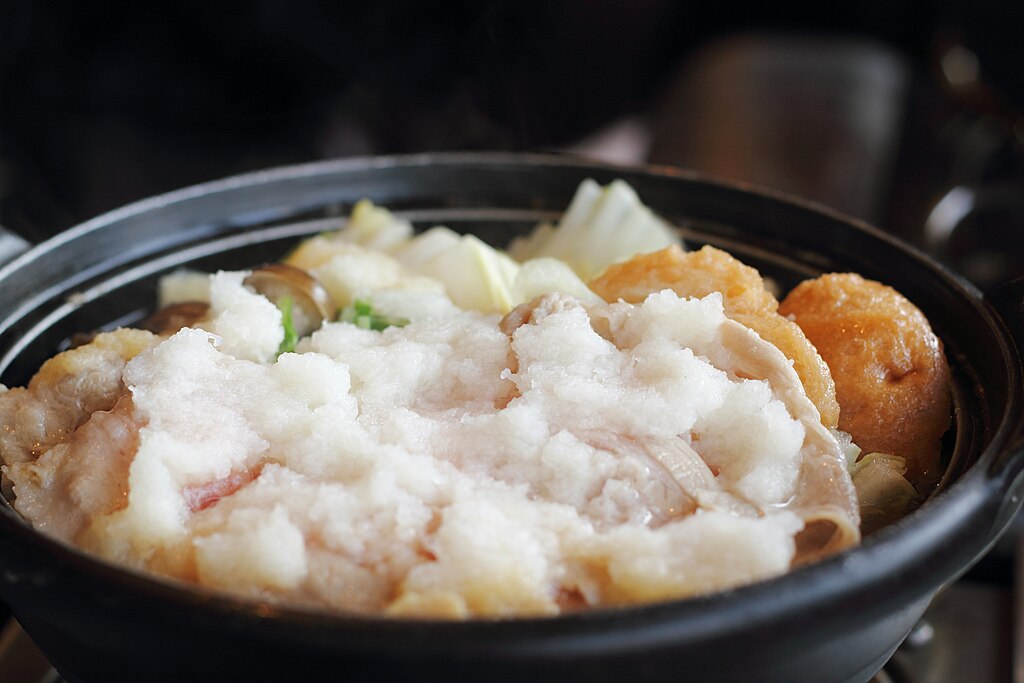Dec 25, 2024
Winter Meals in Hiroshima
Japan is a country known for its regional culinary specialities, meaning that visitors can travel around the country and sample something different everywhere they go. Hiroshima is a great stop-off point for a foodie, with well-known delights including okonomiyaki, oysters, and conger eel. When it comes to winter grub, the prefecture offers up its own twist on several Japanese warm dish staples. Whether you’re eating out at a restaurant or having a nice meal in someone’s home, here’s some tasty winter treats you can expect.
Kaki no Dotenabe
Hiroshima is responsible for over half of Japan’s oyster production, so it makes sense to start off with a mouth-watering oyster dish. The hot pot (nabe) is one of the most common Japanese winter meals. Kaki no Dotenabe translates as ‘oyster hot pot’. It’s the Hiroshiman take on this classic. Oysters are cooked alongside a range of vegetables including mushrooms, carrots, Chinese cabbage, and onions. Tofu is often added to the mix too. The tasty broth is flavored with miso, which is typically added around the inside of the pot during the cooking process according to taste. It’s a delicious winter warmer, for sure.
Kure Curry
Sometimes called Navy Curry or Kaiji Curry, this variation of the popular Japanese curry has been a staple of the Japanese Maritime Self-Defence Force ever since the days of the Imperial Navy pre-1945. It’s known as Kure Curry as the city of Kure in Hiroshima has a long history as a key naval district in Japan. This curry was commonly eaten by troops on Fridays as a way of keeping them healthy and warm. It features curry powder, soy sauce, and stock as a base, to which you can add a range of vegetables and either seafood or chicken, plus obviously steamed rice. You can find this dish in many local restaurants, often served with a side dish of salad or pickles.
Onomichi Ramen
Ramen is one of the dishes most synonymous with Japanese cuisine and Onomichi Ramen is the regional signature take on this. Sometimes referred to as Hiroshima Ramen, it actually hails from the eastern town of Onomichi. Flat ramen noodles are boiled in a broth typically made of chicken stock, pork fat, dried sardines, and soy sauce. To this is added braised pork slices, bamboo shoots, green onion, and sometimes a boiled egg. Expect this to feature as a winter warmer if you visit a Hiroshima household around December or January time.
Bishu Nabe
Another classic hot pot dish, this simple take on the classic is believed to have originated in one of the sake warehouses in the eastern Saijo district as a tasty way of keeping workers warm. It’s a broth made from sake and either chicken or pork, to which you can add vegetables such as Chinese cabbage as well as plenty of salt and pepper seasoning. Also called shonabe, it’s not the most sophisticated entry in the Japanese culinary catalogue but it’s an authentic taste of history for sure.
Oden
Oden is another style of hot pot and, along with nabe, is the one most associated with Japanese winter meals. Hiroshima doesn’t have a named version of this classic, however you can expect to find it served in many restaurants and kitchens across the prefecture. The quintessential broth ingredients are a dashi fish stock, typically made from fermented tuna and kelp, which is mixed with soy sauce. Additional ingredients include daikon, tofu, konnyaku, fishcakes, and sometimes a boiled egg.
t-mizo from Japan, CC BY 2.0, via Wikimedia Commons


About the author